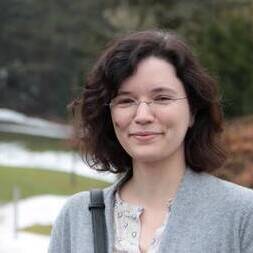
Elena Pulvirenti
Biography
Short bio:
I am an Assistant Professor at Delft Institute of Applied Mathematics, TU Delft. My research interests are mathematical statistical mechanics and probability, with a particular focus on metastability for birth and death processes, metastability for Glauber dynamics on random graphs, equilibrium phase transitions and cluster expansion.
Title: Metastability of interacting particle systems: from discrete to continuum models
Abstract:
The seemingly stable behaviour of a system which, after a long time and upon reaching a critical configuration suddenly transitions to its true stable state is called metastability. The distinguishing feature of metastability is that a dynamical system exhibits a very different behaviour on different time scales: while the system quickly reaches a metastable state, it takes a very long time for it to transition to the stable one.
Lecture 1.
I will start by heuristically explaining the phenomenon of metastability and its universality. Then, I will explain how one can model this behaviour in the setting of Markov processes and how one can study it mathematically with the help of potential theory. This approach, initiated around 2000, interprets the metastability phenomenon as a sequence of visits by the path to different metastable sets and focuses on the precise analysis of the respective hitting probabilities and hitting times of these sets. The key to estimating these mean hitting times is to express them in terms of two fundamental objects from potential theory: the capacity and the equilibrium potential. Estimates on the former can be obtained with the help of well-known variational principles (such as the Dirichlet and Thomson principles), while estimates on the latter are generally more involved. I will conclude by applying these methods to two simple examples: the random walk and the Curie-Weiss model for ferromagnets.
Lecture 2. I will discuss the metastable behaviour of three types of mean-field-like spin systems with random couplings: the disordered Curie-Weiss model, a general spin system with inhomogeneous bond disorder and the dilute Potts model. This class of models comprises, for example, both the Ising model and the Potts model on inhomogeneous dense random graphs. I will then present quantitative estimates of metastability in large volumes at fixed temperatures when these systems evolve according to a Glauber dynamics, i.e. where spins flip with Metropolis rates. A first result identifies conditions ensuring that with high probability the system behaves like the corresponding system where the random couplings are replaced by their averages. More precisely, we prove that the metastability of the former system is implied with high probability by the metastability of the latter. Moreover, I will show relevant metastable hitting times of the two systems and find the asymptotic tail behaviour and the moments of their ratio. Based on joint works in collaboration with Anton Bovier (Bonn), Johan Dubbeldam (Delft), Frank den Hollander (Leiden), Vicente Lenz (Delft), Saeda Marello (Bonn) and Martin Slowik (Mannheim).
Lecture 3. I will introduce a model of fluids in the continuum called the Widom-Rowlinson model. The energy of a particle configuration is determined by its halo, given by the union of unit discs centred at the positions of the particles. I will show that this model has a dual representation and exhibits a 'gas-liquid' phase transition.
I will then introduce a dynamic version of the Widom-Rowlinson model, where particles are randomly created and annihilated inside a torus as if the system were in contact with an infinite reservoir of particles. I will then discuss the metastable behaviour of the WR model, when the dynamics starts from an empty torus. In particular, I will focus on the first time when the torus is fully covered by unit discs, which can be viewed as the crossover time from a 'gas phase' to a 'liquid phase'.
I will show how in order to achieve the transition from empty to full, the system needs to create a sufficiently large droplet, called critical droplet, which triggers the crossover. It turns out that the critical droplet is close to a disc of a certain deterministic radius, with a boundary that is random and consists of a large number of unit discs that stick out by a small distance. A precise analysis of the surface fluctuations allows us to derive both a volume term and a surface term in the asymptotics of the average crossover time.
Based on joint works in collaboration with Frank den Hollander (Leiden), Sabine Jansen (Munich) and Roman Kotecky (Prague).













